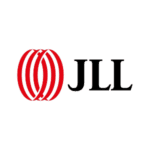The global pandemic has thrown an unknown challenge across industries. The tourism and hospitality industry is slowly getting back to its feet, mostly with domestic tourists. Hotels can adapt to this scenario, and eventually equip themselves to expect better numbers in the coming days.
To respond effectively to the challenge, they need to adopt an approach to recover and recreate their business to thrive in the long term. Leveraging omnichannel marketing can offer their customers a personalized, reliable, and seamless experience.
![]()
Omnichannel marketing can provide customers with targeted, personalized messaging based on their customer journey touchpoint. Personalized, and timely marketing messaging will convince tourists to make bookings. By engaging customers into a unique, integrated, end-to-end journey through omnichannel marketing, hoteliers can not only gain brand recognition but improve footfall too.
Let us dive directly to understand some key parameters that help to build a winning omnichannel strategy:
1. Creating a unified organizational vision
The first step to your omnichannel marketing voyage is to think beyond channels and primarily break your organizational silos.
With the change in consumer behavior and the tourism market post-pandemic, marketing communication has to be across multiple online and offline channels, ensuring the same brand image associated with the hotel, magnifying the exceptional customer experience that patrons have experienced in the past.
This must continue throughout the customer journey and must reflect across channels and stakeholders. Creating a unified organizational vision where the exchange of information will help the hotel staff develop a candid vision of the organization’s objective. Employees, marketing teams, PR agencies, and all other stakeholders can play a vital role in improving the customer experience and increase revenue.
2. Have a panoramic view of your customer
Technology has allowed every customer to have his own way of engaging with your brand. It is of utmost importance to understand the customer journey, understand various touchpoints, and segment customers into groups based on behavior, aided by customer data and analytics.
![]()
Multiple departments are involved in creating a better customer experience. Customer feedback and insights must be shared across all departments and each personnel with the aim of improving service. This will result in brand image upliftment, brand advocacy, and eventually brand loyalty.
3. Think out effective communication channels
Plan your marketing campaigns beyond channels. An integrated view of your customers will help you to track them effectively and customize the experiences for them accordingly.
It is vital to shortlist the channels that your potential audience visit and spend the most amount of time on. Ads, social media, and online communications like promotional emails, loyalty programs, etc. can prove to be vital channels for marketing campaigns.
Identify crucial touchpoints like booking portals that impact customer experience greatly, try bringing them directly under hotel infrastructure, giving hotels control over communication, access to crucial customer data, and opportunity to improve customer experience.
Communication must talk about how the hotel is adapting to provide a seamless and safe hotel stay, post-pandemic. This will help improve conversions, and consequently footfall.
4. Integrate personalization
Mass-market communication and irrelevant emails can land you up in losing your customers. Employ marketing automation tools and CRM to share relevant and timely communication to your targeted audience through a data-driven marketing approach, it will benefit substantially.
CRM tools can assign communications to one user profile across all channels, this helps to build a complete understanding of the guest. The guest can shift the channels of communication and retain previous details without losing the history of past communication. This plays a great role in retention and customer satisfaction.
Along the customer journey, when the guests arrive at the hotel, contactless technology including QR codes and beacons can be used to provide a safer contactless customer experience, without compromising on customer satisfaction
Data from the usage of these QR codes and beacons can be used to derive customer behavior insights. These devices/QR codes themselves can be personalized to showcase the brand image of the hotel.
Measure your omnichannel marketing periodically, it is crucial!
While knowing the steps to leverage omnichannel marketing, it is equally important to measure its effectiveness.
Various metrics can be employed to measure improvement in footfall, and performance of the marketing campaigns. The primary thing is to decide what you intend to achieve from your campaigns and then work accordingly to set the key metrics to improve your outcome.
Conclusion
While there might be challenges, whether pandemic or financial, your omnichannel marketing efforts will improve footfall and fetch revenue in the long term.
Apart from improving footfall, gaining brand recognition, and increasing revenue, the omnichannel marketing experience probably stands to be the ideal way for hoteliers to address the challenges of the day and offer exceptional customer engagement.
Get started with one today!














